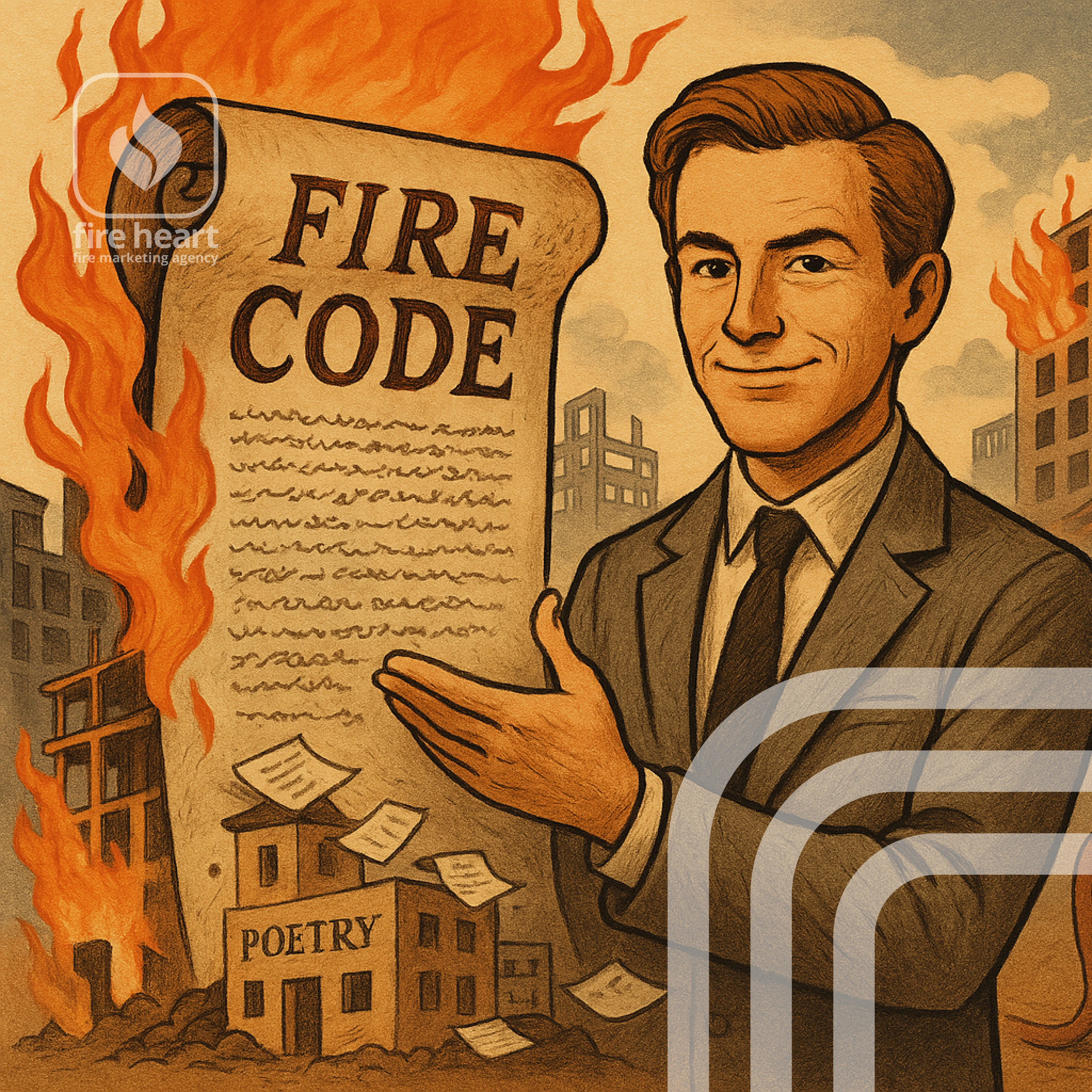
The Lost Art of Fire Codes: How to Make Them More Than Just Bureaucratic Poetry
If you’ve ever cracked open a fire code book, you know it reads like Shakespeare took up engineering after a bad breakup. It's full of clauses, commas, and enough footnotes to trip an elephant. But buried beneath that legal labyrinth is something noble—an ancient art form, forgotten by time and forsaken by haste: the art of keeping people alive when things get hot, fast, and fatal.
Fire codes weren’t meant to be bedtime stories for lawyers. They were written in the blood, smoke, and ash of disasters past. And yet, somewhere between the committee meetings and code cycles, we’ve turned them into bureaucratic haikus—beautiful, dense, and utterly misunderstood.
So let’s roll up our sleeves and rescue these sacred scrolls from the clutches of monotony. Because if you treat fire codes like poetry, you’ll get metaphors. But if you treat them like battle plans? You just might save a few lives.
- Thou Shalt Not Burn: The Forgotten Commandment
- Interpreters Needed: Translating Gobbledygook to Guts
- Bureaucracy vs. Bravery: The Silent War
- Codes as Canvas: Making Fire Safety Beautiful
- The Foolproof Test: If It Confuses a Genius, It's Useless
- The Epilogue They’ll Never Read
Fire codes are the Ten Commandments of safety — but folks treat them like polite suggestions carved into sandstone. Too many build as if fire is a myth told by nervous inspectors.
Truth is, every clause in a code book has a ghost behind it. Someone once died so you wouldn’t have to. That extra stairwell? Somebody once burned looking for one. The door swing direction? Let’s just say inward-swinging doors don’t mix well with stampedes.
Codes aren’t written by poets. They’re etched by survivors.
A good fire code interpreter is worth their weight in fire-retardant gold. Too many designers treat codes like that old Latin prayer you mutter and hope for the best.
We need to rewrite the culture: stop seeing code as constraint and start seeing it as choreography. A dance with fire. You don’t improvise during a blaze — you follow the steps, or the building leads.
Fire prevention isn’t just about checking boxes. It’s about reading between the lines — and hearing the screams that never made it into the record.
There’s a war going on — between those who write fire codes and those who live by them. Engineers draft with rulers and pens. Firefighters draft with hose lines and scars.
The brave don’t care how many pages your document has. They care if the standpipe works, if the smoke control system functions, if the door actually shuts when it’s supposed to.
So next time you find yourself arguing over font sizes in the appendix, remember — real lives hang on your every keystroke.
Now here’s a thought that’ll make your inner rebel grin: fire codes can inspire creativity.
Designers whine, "Fire codes ruin the aesthetics". But beauty without safety is just a pretty coffin. The best architecture integrates protection with style — like hiding a lion in a tuxedo.
Invisible sprinkler heads, concealed dampers, radiant barriers — these aren’t enemies of design. They’re the secret weapons of the wise.
Let fire safety be your muse, not your muzzle.
If your code-compliant system requires a PhD and a blood sacrifice to operate, start over.
Fire codes must pass what I call the "foolproof fool test". Can a sleep-deprived janitor in the middle of a panic push the right button? Can a six-year-old find the exit sign?
If not, you're not protecting people. You're performing theater — and the building's the stage for its own demise.
Most folks won’t care about fire codes until they’re trapped on the wrong side of a fire door that doesn’t open.
But not you.
You, dear reader, are the keeper of the code. A translator of tragedy into prevention. You’re here because you believe buildings should stand as monuments to life — not mausoleums of oversight.
So raise your coffee, or helmet, or red pen — and vow this: Fire codes are not poetry. They are prophecy. And you, my friend, are the interpreter.
The Final Word: Turn Codes Into Courage
Don’t write for the next review cycle — write for the next near-miss.
Don’t design to pass inspection — design to pass the test of fire.
Because one day, your code-compliant building might face the flames. And when it does, may your work hold strong, while the fire falters.
Fire Heart | Fire Safety Marketing Agency
Safeguarding Lives, One Design at a Time
Author:
Pavlo Lapikov